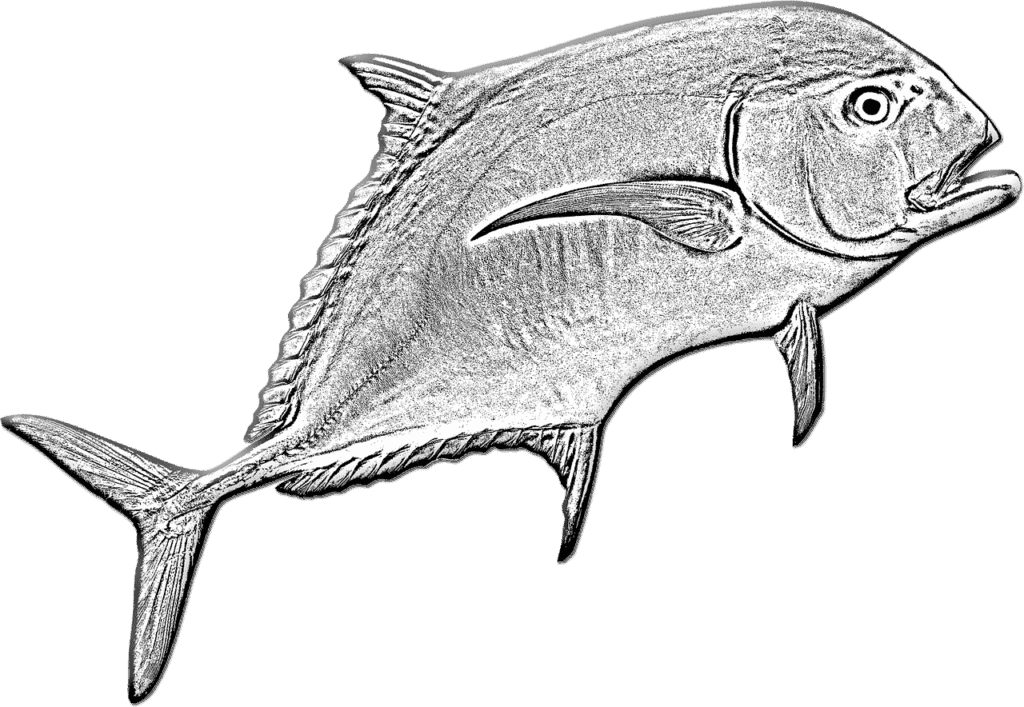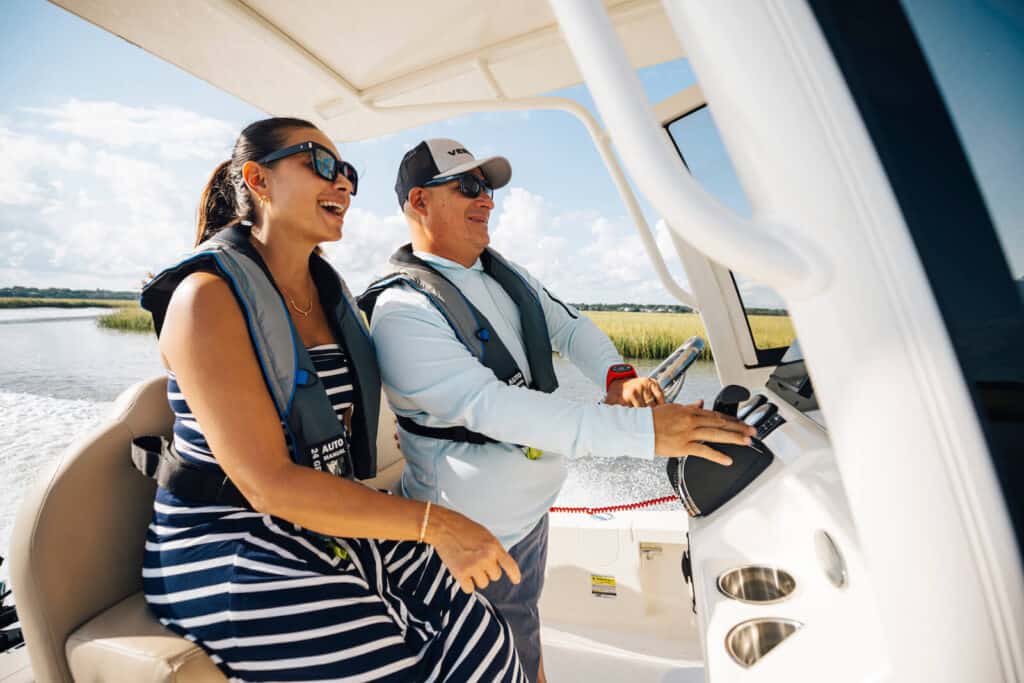
Spring air around the beach is cold. The water isn’t much better. However, every year anglers brave the elements as they step into the surf and begin casting to the shallow flats hoping for a bite.
The fish they pursue has a cult following. You won’t see it mounted on the walls of local restaurants or written about in your favorite game magazine. Instead, you will find it on the plate of locals and in the stories of grizzled anglers that have seen many seasons. Cracked, scarred, and chaffed hands waved in the air to illustrate their latest conquest.
When asked what their favorite fish to catch is, “pompano” is their only reply.
Pompano are the cells in the blood of many anglers along the Gulf and Atlantic coasts. They are not a glorious fish but one of the common man. They are caught by the young, and the old, the rich and the poor, those lucky enough to be onboard a boat, and those stuck on a jetty. In times of division, the pompano becomes a common thread of conversation that unites people no matter who they are.
For those looking for an extra challenge, catching pompano on a fly can be exceptionally difficult. Given the time of year, the waters and conditions they favor, and the food they eat, they are not easily caught on the fly.
Wrought with tradition, the pompano is the perfect fish for a fly fisherman.
Where to Find Pompano
Pompano are found all over the Atlantic coast in both North America and Africa. They have very deep bodies but small mouths that are toothless. Their tail is a very distinctive fork that stands in contrast to their plate-like body.
They are the smaller cousin to the permit and only get to be about two pounds in weight. This smaller size makes them perfectly suited to cruising the shallow waters that allow them to feed on their primary food source, the sand flea.
Though the typical pompano is small, they have been known to get quite large in the right conditions. The world record pompano weighed in at 11.6lbs and was caught by a high school senior in North Carolina. Granted that this is the outlier, not the norm. However, it still conjures up the hopes of catching an exceptional fish with every cast.
Packing the Tacklebox

Pompano fishing on the fly is very difficult. This is mostly due to their preferred food being difficult to imitate with a fly and further compounded by the ideal pompano weather, which is difficult to fly fish in. However, sight-fishing pompano is exceptionally rewarding when the water is clear. No matter the condition, having the right tackle is essential.
Rods—One of the great things about pompanos is their size and number. You can get a lot of fun fishing without needing a lot of heavy, expensive gear. When it comes to rods, a fairly standard 8-weight rod will suffice. An 8-weight gives you enough stiffness to cast the appropriate flies while being sensitive enough for the smaller fish.
Reels—Unlike other saltwater fish, pompano generally don’t require a heavy drag or large repositories of backing to land the fish. They will run well at first but soon tire and are easily recovered. When considering a reel for pompano, have a bias for saltwater durability. With their proclivity toward shallow water during the height of the season, you will likely find yourself wading. This opens the reel up to a lot of spray and submersion opportunities. Having a reel that can deal with the saltwater is crucial.
Leaders—Being that they are shallow-water fish, leader visibility is a concern that should always be kept in mind. Using a fluorocarbon leader will help minimize the leader’s visibility in the shallow flats and sandbars that reliably produce pompano. Seven to eight feet should be sufficient to present your fly undetected.
Flies—Pompano live off a diet of bottom-dwelling creatures like small crabs and sand fleas. Occasionally, they will eat other things that present themselves as targets of opportunity. Your fly choice should imitate crabs and sandfleas primarily. However, there are times when fishing on top of the water is also productive.
Hooks—Pompano’s mouths are not very big, and they are accustomed to eating smaller creatures. Therefore, tailoring your fly’s hook size to fit in their mouths is crucial to hooking up with them. The ideal hook size for Pompano is 1/0. Anything larger than that will still get strikes, but hooking one will be incredibly difficult.
Tips for Catching Pompano on a Fly
Capitalize on the Spring– There is a fish for every season. When the weather is warming, and flowers are budding out, it is time to start looking for pompano. As water temperatures warm up, the pompano move in. By paying attention to the areas to your south, you can generally figure out when pompano fishing will heat up in your home waters. Once the surf hits 68 degrees, pompano fishing will take off.
Sand Flea Patterns- Bait fishermen use, nearly exclusively, locally caught sand fleas to catch pompano. As fly fishermen, we don’t have that luxury. However, many patterns emulate sand fleas. Dead drifting the Sand Flea Fly is a great way to put an imitation of the sand flea right in the strike zone.
Seek Rough, Shallow Water- Pompano relies on the surf to churn up food. Therefore, they gravitate to heavily silted areas, thrashed by incoming waves, and have low visibility. Sand bars and tidal zones are great places to find pompano searching for their next meal. These areas are typically only a few feet in depth and can be great places to wade and fish.
Persevere– If you are setting off to catch pompano on a fly, be ready for disappointment. Those around you that are baitfishing with sand fleas will undoubtedly be met with success. However, catching one on a fly rod is incredibly difficult. Yet, the reward is worth the wait. Being able to see a pompano and then make a presentation to them is incredibly exciting. Therefore, persevere.
Waders- Springtime will undoubtedly bring cooler weather from time to time. This can make wading into sandbars and other areas that hold pompano less than attractive. Getting a set of neoprene waders can be a game changer, allowing you to brave the cold water and fish longer. With every extra minute, you will have that much higher chance of hooking a pompano on a fly.
Catching Pompano with Scout Boats

Sometimes, there are too many people on the beach, piers, and more easily accessible areas to enjoy a day fishing for pompano. Like you, the fish also perceive this pressure and move off to other places that aren’t as easy to get to. Therefore, you need to be able to chase after them when this happens.
Scout Boats offers the perfect boat for this situation, the 231 XSB. While it is capable of long hauls across whatever estuary you find yourself in, it drafts shallow enough to get right where the pompano are. This allows you to keep dry while you pull in fish after fish in relative comfort.

